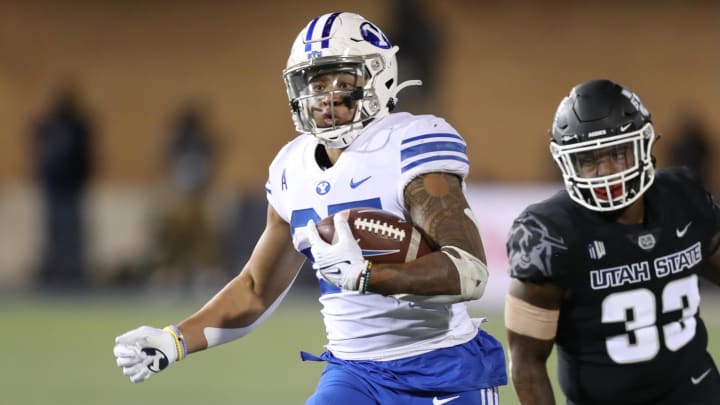New Football Roster Restrictions Could Impact the Walk-On Program at BYU

Revenue sharing is coming to college football. Revenue sharing will impact the sport in a variety of ways, including roster size. Now that players are going to be paid, schools are taking a closer look at roster sizes. Rosters are expected to be trimmed from around 125 to 105. Upcoming roster restrictions could impact the walk-on program at BYU.
Future roster sizes have been rumored to be as low as 85-95, but based on recent reports, the roster is "expected to be around 105" according to Ross Dellenger.
Tony Petitti says commissioners are finalizing roster figures but he won't give specifics. As we reported last week - based on comments from SEC coaches - the football roster is expected to be around 105. Baseball at the mid-30s, per Greg Sankey.
— Ross Dellenger (@RossDellenger) July 23, 2024
Going into Fall camp, BYU has 123 players on the roster. In the scenario where rosters are trimmed, scholarship limits will either stay at 85 or increase, meaning the roster cuts would impact walk-ons the most. In BYU's case, if the roster was trimmed to 105, that would translate to cutting 18 walk-ons that are currently on the roster.
Throughout BYU football history, the walk-on program has played an important role at BYU. It's been especially important under Kalani Sitake, as former walk-ons like Tyler Allgeier and Dax Milne have gone on to become NFL draft picks.
While there are a few walk-on success stories that make headlines, the large majority of walk-ons don't pan out. That's just the reality of the challenges that walk-ons have to overcome before they can contribute at the FBS level.
If the walk-on program is diminished, it will put even more pressure on the coaching staff to increase their hit rate (% of scholarship players that become starters/contributors) with scholarship players. Scholarship hit rate is a challenge for every coaching staff, but it's been a particular challenge for BYU. That deficiency has been around for not only the Sitake era, but BYU dating back to the days of Bronco Mendenhall as well.
In the future, BYU won't be able to take on as many projects and fill in the gaps with walk-ons. The old defensive staff at BYU was especially guilty of relying too much on walk-ons. In the future, rosters will need to be managed with more discipline. Roster management best practice in college football could resemble roster management in the NFL. Coaching staffs might have to identify prospects as future starters or future backups and allocate money and roster spots accordingly. Position coaches will need to think about adding a few more low-ceiling, high-floor players to be on scholarship.
